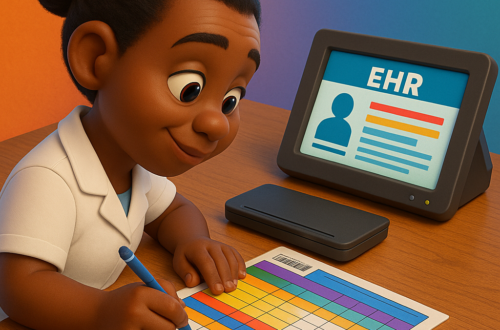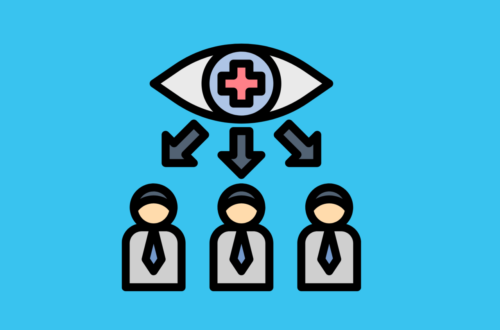
Meet the Bengaluru Surgeon Making Affordable Medical Devices for India—and the World
Medical equipment often consumes a significant portion of a hospital or clinic’s budget, as many devices must be imported. Kumaresh Krishnamoorthy, an ENT surgeon from Bengaluru, is on a mission to change that by building cost-effective medical devices in India.
Growing up in the lush farmlands of Elur, a town in Tamil Nadu, Krishnamoorthy experienced hardship early on. Even though his father held a PhD in economics, the family couldn’t afford a ₹5 doctor consultation. He admired his father’s idealism, and that upbringing shaped his journey into healthcare entrepreneurship.
India’s medical device industry is still in its infancy—75% of devices are imported. In FY19 alone, imports rose 24% year-on-year to ₹38,837 crore, a jump of ₹7,450 crore, according to data from the Commerce Ministry collected by the Association of Indian Manufacturers of Medical Devices (AiMeD).
Due to the high cost of imported equipment, many small clinics and hospitals in India are unable to access advanced medical devices. With most of the country’s population still living in rural areas, shortages in infrastructure and resources are common. In this context, Dr Krishnamoorthy’s low-cost innovations have become lifelines for under-resourced clinics and hospitals.
A First-of-Its-Kind Clinical-Grade Laryngoscope
The video laryngoscope developed by the Bengaluru doctor costs only ₹22,500, including GST. The significantly lower cost is expected to reduce surgical expenses across the board.
Studies indicate that video laryngoscopy is the new gold standard for endotracheal intubation. However, its adoption is often limited by financial constraints. Dr Krishnamoorthy’s device allows better glottic visualisation, a higher success rate of intubation, and a faster learning curve. It minimises trauma and eliminates the need for complex airway manoeuvres like larynx manipulation or repositioning the head. The intubation process can also be recorded on a mobile phone for future reference and patient records.
The reusable VL design features a waterproof, high-resolution miniature video camera embedded into a stainless steel Macintosh blade.
“The device can be used comfortably, even in paediatric cases, and is especially helpful in complicated airways with trauma or distortion. It’s a powerful teaching tool for airway anatomy—ideal for students, paramedics, ICU personnel, ambulance staff, and emergency doctors. Lightweight, affordable, and easy to use, it requires minimal training and could replace traditional laryngoscopes,” explains Dr Krishnamoorthy.
Since its launch in December 2019, 25 units have been sold to hospitals and doctors. According to Dr Krishnamoorthy, the device can also play a crucial role in documenting the therapeutic process. These procedures can be recorded and shared with patients, increasing transparency in the healthcare system.
UV Bot: A Powerful Mobile Steriliser for Hospital Rooms
Dr Krishnamoorthy has also developed a powerful room steriliser for hospitals—the UV Bot. Here’s how it works: UVC light deactivates viruses, bacteria, fungi, moulds, and spores. It’s proven effective against drug-resistant pathogens like Methicillin-resistant Staphylococcus aureus (MRSA), Clostridium difficile, Vancomycin-resistant Enterococcus (VRE), influenza, and the dengue virus.
It can be used in operation theatres, neonatal wards, children’s wards, post-operative care units, ICUs, patient rooms, laboratories, and even common areas. It’s chemical-free, saves manpower, and rooms are ready for use right after sterilisation. There are two UV Bot variants, priced between ₹9 lakh and ₹15 lakh. The product has received certification from a NABL-accredited laboratory.
Learning Through Failure
Dr Krishnamoorthy initially ran a company that aimed to convert academic research from institutes like IITs into market-ready products. However, after three years, not a single product reached the market. “It was my first big failure. My consultation work had dropped to zero. That’s when I decided to step down as CEO,” he says.
The ENT surgeon has also developed a portable disinfection unit that can safely sanitise electronics and other sensitive medical equipment. Each of his devices is built in two variants—one for everyday clinical use and a more robust enterprise edition for high-volume usage.
Upcoming Product Releases
A cancer survivor himself, Krishnamoorthy shares that his personal experience as a patient inspired his next innovation: an IoT-enabled IV fluid monitor. “During chemotherapy, I had a severe reaction. I was lucky to recognise it in time—if I hadn’t been a doctor, I might not have survived. In most hospitals, nurses can’t monitor every room constantly. If a patient reacts, the system alerts the nurse instantly.”
The IV fluid will not stop automatically, but a real-time notification will be sent to the nurse or doctor, who must intervene. “We’re waiting for the patent to come through. Once that happens, we’ll begin validation trials,” he adds.
Unlike many other medical device startups, Dr Krishnamoorthy’s innovations are designed to place responsibility on doctors rather than patients.
The devices aren’t available on marketplaces like Amazon. Most sales happen through word of mouth. According to Dr Krishnamoorthy, buyers from the UK and Singapore have already shown interest and are working toward pushing the devices through regulatory approval.
The ENT physician has partnered with his friend’s company, Real Time Controls, to manufacture the devices. He notes that one of the biggest mistakes healthcare startups make is excluding medical professionals from their founding teams—often resulting in products that aren’t user-friendly for clinicians.
Balancing Vision with Current Challenges
Whether Krishnamoorthy’s devices will significantly impact rural India remains to be seen. He admits that rural deployment hasn’t begun yet and acknowledges the slow pace of government processes. “When N.R. Narayana Murthy started Infosys, he faced many hurdles. But he made the world look to India for IT solutions. I want the world to know that medical devices can be made in India—affordable, and of international quality,” says the doctor, who dreams of winning a Nobel Prize in Medicine one day.



